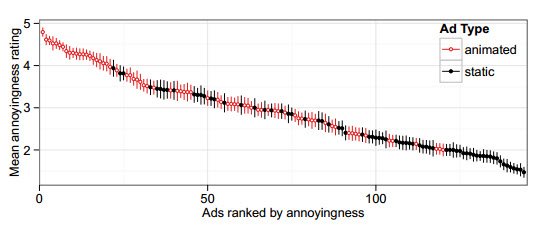The concept of ads is very tricky, I should say. It helps people earn some money, while for the end-user, the whole experience may be helpful, but sometimes irritating too. But then in today’s life, one cannot do away with ads – whether it’s in the newspapers, the television, the outdoors or the web.
So is there a specific pattern as to why users find ads irritating? Ask Dan Goldstein and Siddharth Suri from Microsoft Research who have jointly presented the paper, The Cost of Annonying Ads, during the 22nd International World Wide Web conference which investigates the whole scenario behind irritating ads and why users think of them in that way.
The paper, co-authored by Preston McAfee of Google, reconfirms the fact that though ads do contribute to a major part of the Internet economy, they sometimes cannot stop a web user from expressing his ire over annoying/blinking/irritating ads.
“Web publishers are paid for the number of ad impressions they can deliver. That leads to an interesting shortcoming: Publishers know how much money they make from annoying ads, but they don’t know the price they pay when frustrated users tire of the intrusions and abandon their websites entirely.”
The paper’s authors conducted a two-experiment investigation to:
• Analyze dislay-ad features that are annoying.
• Place a monetary value on the cost of the annoyances.
The results of this investigation have the potential to affect the economics of the Internet ad market. Siddharth Suri explains how:
“In a number of ways. First, a small group of users could rate a given ad, and then the publisher could charge the advertiser based on how annoying users rate this ad. Second, one could train a machine-learning algorithm with examples of good and bad ads, and then a publisher could run a new ad through the classifier and price the ad-based on its predicted negative impact. Third, one could allow users to close ads—or swap in another ad. Those ads that get closed more often should be priced higher.”
This image shows that the most annoying ads were animated and the least annoying ads were static.

Well that’s interesting. You can read more about their investigation in to the whole ‘Annoying Ads’ phenomenon here.
Leave a Reply